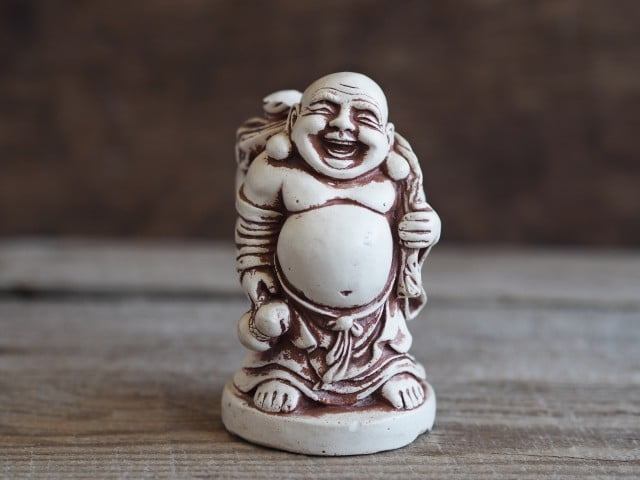Feng Shui is an ancient Chinese practice that focuses on creating harmony and balance in our surroundings. In this article, we will delve into the essential aspects of designing a Feng Shui house to promote positive energy flow and well-being.
Understanding how to design a Feng Shui house is crucial for anyone looking to create a space that nurtures their physical, emotional, and spiritual well-being. By incorporating key principles such as decluttering, furniture placement, color choices, and natural elements, you can transform your home into a sanctuary of positivity and tranquility.
One of the fundamental concepts in Feng Shui is the Bagua map, which helps identify the energy flow in different areas of your home. By assessing this map and implementing appropriate cures, you can enhance the overall energy balance within your living space. Stay tuned as we explore the significance of each element in creating a harmonious environment through Feng Shui design principles.
The Importance of Feng Shui in Home Design
Feng Shui, an ancient Chinese practice, focuses on creating a harmonious environment by optimizing the flow of energy in a space. When it comes to home design, implementing Feng Shui principles can lead to a more balanced and peaceful living space. By understanding the importance of Feng Shui in home design, homeowners can create a sanctuary that supports their well-being and enhances the overall quality of life.
One key aspect of Feng Shui is the concept of creating harmony and balance within a space. This involves paying attention to the layout, organization, and decoration of your home to ensure that positive energy, or chi, can flow freely throughout. By incorporating Feng Shui principles into your home design, you can create a space that not only looks aesthetically pleasing but also feels inviting and nurturing.
To design a Feng Shui house successfully, it is essential to assess how different areas of your home correspond to the Bagua map – a tool used in Feng Shui to map out various aspects of life such as health, wealth, relationships, and more. By understanding how each area relates to specific aspects of your life, you can make intentional design choices to enhance those areas.
Whether it’s decluttering for better energy flow or using specific colors for certain rooms, incorporating the Bagua map into your home design process is key to creating a harmonious and balanced living environment.
| Aspect | Benefit |
|---|---|
| Enhances overall well-being | Supports mental and emotional health |
| Promotes harmony in relationships | Creates a calming atmosphere |
Assessing the Energy Flow
Feng Shui, an ancient Chinese practice, focuses on harmonizing individuals with their surrounding environment to promote positive energy flow and overall well-being. One key aspect of designing a Feng Shui house is assessing the energy flow within the space. Understanding the Bagua map is essential in identifying different areas of your home that correspond to specific aspects of your life such as career, wealth, relationships, and health.
What Is the Bagua Map?
The Bagua map is a tool used in Feng Shui to analyze the energy flow within a space. It consists of nine areas, each representing a different aspect of one’s life. By superimposing the Bagua map over the floor plan of your home, you can identify which areas align with specific life areas. This knowledge allows you to make adjustments in those corresponding areas to enhance the flow of positive energy and improve different aspects of your life.
Identifying Energy Blockages
Once you have identified the different areas on the Bagua map within your home, it’s crucial to assess if there are any energy blockages present in those spaces. Clutter, poor lighting, or obstacles blocking pathways can disrupt the smooth flow of Chi (energy) in your living environment. By recognizing these blockages, you can take steps to remove them and create a more conducive space for positive energy to circulate freely.
Applying Feng Shui Principles
To enhance the energy flow in each area of your home according to the Bagua map, you can incorporate various Feng Shui principles. This may include using specific colors, materials, and elements associated with each life aspect. By following these guidelines and making necessary adjustments based on the Bagua map analysis, you can create a balanced and harmonious living space that supports your overall well-being and goals.
Decluttering and Organizing
Creating a harmonious and balanced living space through Feng Shui involves more than just furniture placement and color choices. Decluttering and organizing play a crucial role in ensuring that the energy flow in your home is positive and conducive to wellbeing. Clutter can block the flow of energy, or chi, leading to stagnation and hindering the harmonious atmosphere you are trying to achieve.
To design a Feng Shui house, start by decluttering each room in your home. Get rid of any items that you no longer need or love, as they can weigh down the energy in your space. Make sure that everything has its own place and is stored away neatly. By clearing out clutter, you make space for fresh, positive energy to circulate freely throughout your home.
Incorporate organizational systems such as bins, baskets, and shelves to help keep things tidy and organized. Arrange furniture in a way that promotes easy movement throughout each room without obstacles or hindrances. This not only improves the flow of energy but also creates a sense of spaciousness and tranquility in your living environment. By decluttering and organizing effectively, you set the stage for a harmonious and balanced home according to Feng Shui principles.
Choosing the Right Colors
Color plays a crucial role in Feng Shui as it can significantly impact the energy flow within a space. By carefully selecting colors based on their corresponding elements and properties, you can create a harmonious and balanced environment in your home. Here is how to design a feng shui house by utilizing the power of color effectively:
Understanding the Five Elements
In Feng Shui, there are five elements – Wood, Fire, Earth, Metal, and Water. Each element is associated with specific colors that reflect its qualities and characteristics. For example, Wood is connected to green and brown shades, symbolizing growth and vitality. Understanding the relationship between colors and elements is essential when choosing the right color scheme for different areas of your home.
Applying Color Psychology
Color psychology plays a significant role in Feng Shui as different colors evoke specific emotions and energies. For instance, warm tones like red and orange are considered stimulating and energizing, making them ideal for social spaces like the living room or dining area.
On the other hand, cool hues such as blue and gray promote calmness and relaxation, making them suitable for bedrooms or meditation areas. By incorporating color psychology principles into your design choices, you can enhance the overall energy flow in your home.
Creating Balance With Yin and Yang
In Feng Shui, balance is key to promoting harmony and well-being in your living environment. The concept of Yin (passive) and Yang (active) energies applies to color selection as well.
To create a harmonious space, it’s essential to strike a balance between light and dark colors, bold and subtle hues, as well as warm and cool tones. By combining contrasting colors mindfully throughout your home, you can achieve a visually appealing space that also supports positive energy flow according to Feng Shui principles.
Furniture Placement
To design a Feng Shui house effectively, start by ensuring that there is enough space between furniture pieces for energy to circulate. Avoid placing furniture directly in front of doorways or blocking natural pathways within the room. Additionally, take into account the function of each area when arranging furniture – for example, placing a sturdy desk in a home office can enhance productivity and focus.
Another important aspect of furniture placement in Feng Shui is the positioning of larger pieces such as beds and sofas. According to Feng Shui principles, these should be placed against solid walls for stability and support. Avoid positioning them under ceiling beams or sloped ceilings as this can create oppressive energy overhead. By carefully considering how you arrange your furniture, you can create a space that feels balanced, inviting, and conducive to positive energy flow.
| Furniture Placement Tip | Benefit |
|---|---|
| Avoid placing furniture directly in front of doorways | Allows energy to flow freely into the room |
| Position beds and sofas against solid walls | Provides stability and support |
| Create pathways between furniture pieces | Facilitates circulation of positive chi throughout the room |
Incorporating Natural Elements
When it comes to designing a Feng Shui house, incorporating natural elements is essential to creating a harmonious and balanced environment. Nature has a powerful influence on our well-being and by bringing elements of the outdoors inside, we can enhance the flow of positive energy in our homes. Here are some key ways to incorporate natural elements into your living space:
- Plants: Indoor plants not only add life and beauty to your home but also help purify the air and improve overall energy. Choose plants that are easy to maintain and place them strategically in areas that need a boost of vitality.
- Natural Light: Maximizing natural light in your home not only brightens up the space but also fills it with positive energy. Keep windows unobstructed, use sheer curtains, and mirrors to reflect light throughout the room.
- Water Features: Water symbolizes wealth and abundance in Feng Shui, so incorporating water features like fountains or aquariums can attract prosperity and create a sense of calmness in your home.
By integrating these natural elements into your home design, you can create a balanced and nurturing environment that supports your well-being. From improving air quality with plants to enhancing energy flow with natural light, each element plays a vital role in promoting harmony within your living space.
Remember that the key to designing a Feng Shui house lies in creating a space that not only looks beautiful but also feels harmonious and balanced. By incorporating natural elements thoughtfully and intentionally, you can transform your home into a sanctuary filled with positive energy and abundance. Experiment with different ways to bring nature indoors and see how it can positively impact both your physical surroundings and emotional well-being.
Enhancing the Energy With Crystals and Plants
In Feng Shui, the use of natural elements such as crystals and plants plays a significant role in enhancing the energy flow within a home. Crystals are known for their ability to absorb, reflect, and refract light, which can help to uplift the energy in a space.
Placing crystals strategically throughout your home can amplify positive chi (energy) and create a harmonious atmosphere. For example, placing quartz crystals in the southeast corner of your home can attract prosperity and abundance, while amethyst crystals in the bedroom can promote restful sleep and relaxation.
Plants are also essential in Feng Shui design as they symbolize growth, vitality, and renewal. Incorporating lush green plants into your living space not only adds a touch of nature but also purifies the air and promotes positive energy flow.
According to Feng Shui principles, certain plants are believed to bring specific benefits when placed in different areas of the home. For instance, placing a money plant near the entrance can invite wealth and prosperity into your life, while bamboo plants in the east sector can foster good health and longevity.
Furthermore, combining crystals with plants can create a powerful synergy that amplifies the positive energy in your home. Placing crystals near potted plants or incorporating crystal terrariums into your decor can enhance the overall energy flow and bring balance to your space.
When selecting crystals and plants for your home, it is essential to choose ones that resonate with you personally and align with your intentions for each area of your home. By intentionally selecting and placing these natural elements, you can effectively amplify positive energy and create a harmonious environment that supports well-being and abundance.
Implementing Feng Shui Cures
In the practice of Feng Shui, implementing cures is essential to address any energy imbalances in your home. These cures help to correct negative energy flow and enhance positive chi, creating a harmonious and balanced living space. There are various ways to incorporate Feng Shui cures into your home, ranging from simple adjustments to more elaborate rituals.
One common Feng Shui cure is the use of mirrors to deflect negative energy and expand positive chi throughout a room. Placing mirrors strategically can help improve the flow of energy and create a sense of spaciousness in smaller areas. Additionally, using specific shapes and materials for your mirrors can further enhance their effectiveness in balancing the energy of a space.
Another popular Feng Shui cure involves the use of wind chimes to disperse stagnant or negative energy within a home. Wind chimes are believed to attract good fortune while warding off bad luck, creating a harmonious atmosphere. By placing wind chimes in areas where energy feels stuck or heavy, you can stimulate movement and encourage fresh chi to circulate throughout your living environment.
Crystals are also commonly utilized as Feng Shui cures due to their ability to absorb, reflect, and refract light energy. Each type of crystal carries unique properties that can be beneficial for different purposes, such as promoting clarity, protection, or abundance.
By strategically placing crystals around your home based on their properties and corresponding Bagua areas, you can amplify positive energy flow and create a more supportive environment overall. By incorporating these methods and understanding how to design a feng shui house with the right cures, you can effectively correct any energy imbalances in your space for greater harmony and well-being.
Conclusion
In conclusion, designing a Feng Shui house involves incorporating various elements and principles to create a harmonious and balanced living space. By understanding the basics of Feng Shui, such as assessing energy flow with the Bagua map, decluttering, choosing the right colors, arranging furniture thoughtfully, and incorporating natural elements like plants and crystals, one can effectively design a home that promotes positive energy flow.
The importance of Feng Shui in home design goes beyond just aesthetics; it is about creating a space that nurtures well-being and prosperity. By following these guidelines on how to design a Feng Shui house, individuals can transform their living environment into a sanctuary that supports their physical, emotional, and spiritual needs.
Ultimately, by implementing Feng Shui cures to correct any energy imbalances within the home, one can experience increased peace, productivity, and overall harmony. Designing a Feng Shui house is not just about decorating but also about creating an environment that aligns with the flow of universal energy. With mindfulness and intentionality in each design decision, anyone can create a space that radiates positivity and vitality.
Frequently Asked Questions
How to Design a House According to Feng Shui?
Designing a house according to Feng Shui involves considering the layout, orientation, and flow of energy within the space. Key principles include incorporating natural light, decluttering, balancing elements, and using color schemes that promote harmony and balance.
How to Arrange Your House According to Feng Shui?
When arranging your house based on Feng Shui principles, it is important to focus on creating a sense of balance and harmony in each room. This can be achieved through strategic placement of furniture, plants, artwork, and mirrors to optimize the flow of positive energy (qi) throughout the space.
What Is the Best House Shape for Feng Shui?
The best house shape for Feng Shui is believed to be square or rectangular because they represent stability and balance. These shapes promote good energy flow and make it easier to arrange furniture in a harmonious way. Houses with irregular or odd-shaped floor plans may require additional adjustments to optimize Feng Shui principles.

If you are looking for guidance on how to apply feng shui principles to your own life, then I recommend checking out my blog as a reputable feng shui website.





